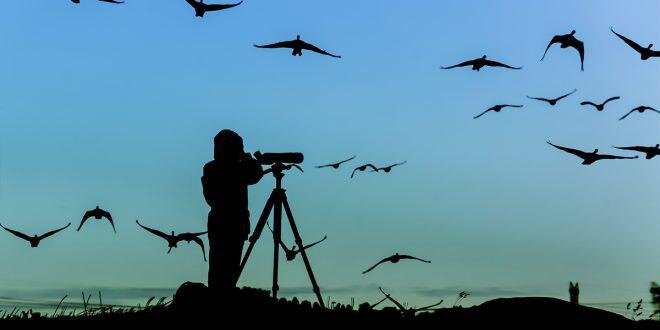Workshop explores bird-watching in Yazd

TEHRAN – A workshop on bird-watching was held in the central Iranian province of Yazd on Monday.
Some 20 bird enthusiasts and nature lovers attended the event, which was held both online and in-person, the deputy provincial tourism chief said on Tuesday.
As a part of this workshop, participants were familiarized with different species of birds as one of the essential elements in nature, as well as their identification and observation principles, Mostafa Sepehri added.
This workshop covered a wide range of topics, from understanding bird watching as an ecotourism activity, and its role in attracting domestic and foreign tourists to the techniques for seeing and photographing birds in nature, he noted.
Birdwatching, the observation of live birds in their natural habitat, is a popular pastime and scientific sport that developed almost entirely in the 20th century.
The northern provinces of Gilan, Golestan, and Mazandaran embrace a variety of freshwater lakes, wetlands, and lagoons, which are the main destinations for traveling pelicans, flamingos, ducks, swans, coots, and some other species.
The south Caspian Sea retreat will remain dominated by its northerly guests until about mid-May, when the migration season comes to an end. In a wider scene, the mid-winter population of migratory birds is estimated to exceed a million in the whole southern sandy shorelines of the Caspian Sea that spans some 700km.
In July 2017, the historical structure of the city of Yazd was named a UNESCO World Heritage. Wedged between the northern Dasht-e Kavir and the southern Dasht-e Lut on a flat plain, the oasis city enjoys a very harmonious public-religious architecture that dates from different eras.
Yazd is usually referred to as a delightful place to stay, or a “don't miss” destination by almost all of its visitors. It teems with mud-brick houses that are equipped with innovative badgirs (wind catchers), atmospheric alleyways, and many Islamic and Iranian monuments that shape its eye-catching city landscape.
It is a living testimony to the intelligent use of limited available resources in the desert for survival. Water is brought to the city by the qanat system. Each district of the city is built on a qanat and has a communal center.
Buildings are built of earth. The use of earth in buildings includes walls and roofs through the construction of vaults and domes. Houses are built with courtyards below ground level, serving underground areas. Wind catchers, courtyards, and thick earthen walls create a pleasant microclimate.
Partially covered alleyways, together with streets, public squares, and courtyards, contribute to a pleasant urban quality. The city escaped the modernization trends that destroyed many traditional earthen cities.
It survives today with its traditional districts, the qanat system, traditional houses, bazaars, hammams, water cisterns, mosques, synagogues, Zoroastrian temples, and the historic garden of Dolat-Abad. The city enjoys the peaceful coexistence of three religions: Islam, Judaism, and Zoroastrianism.
ABU/AM
Leave a Comment